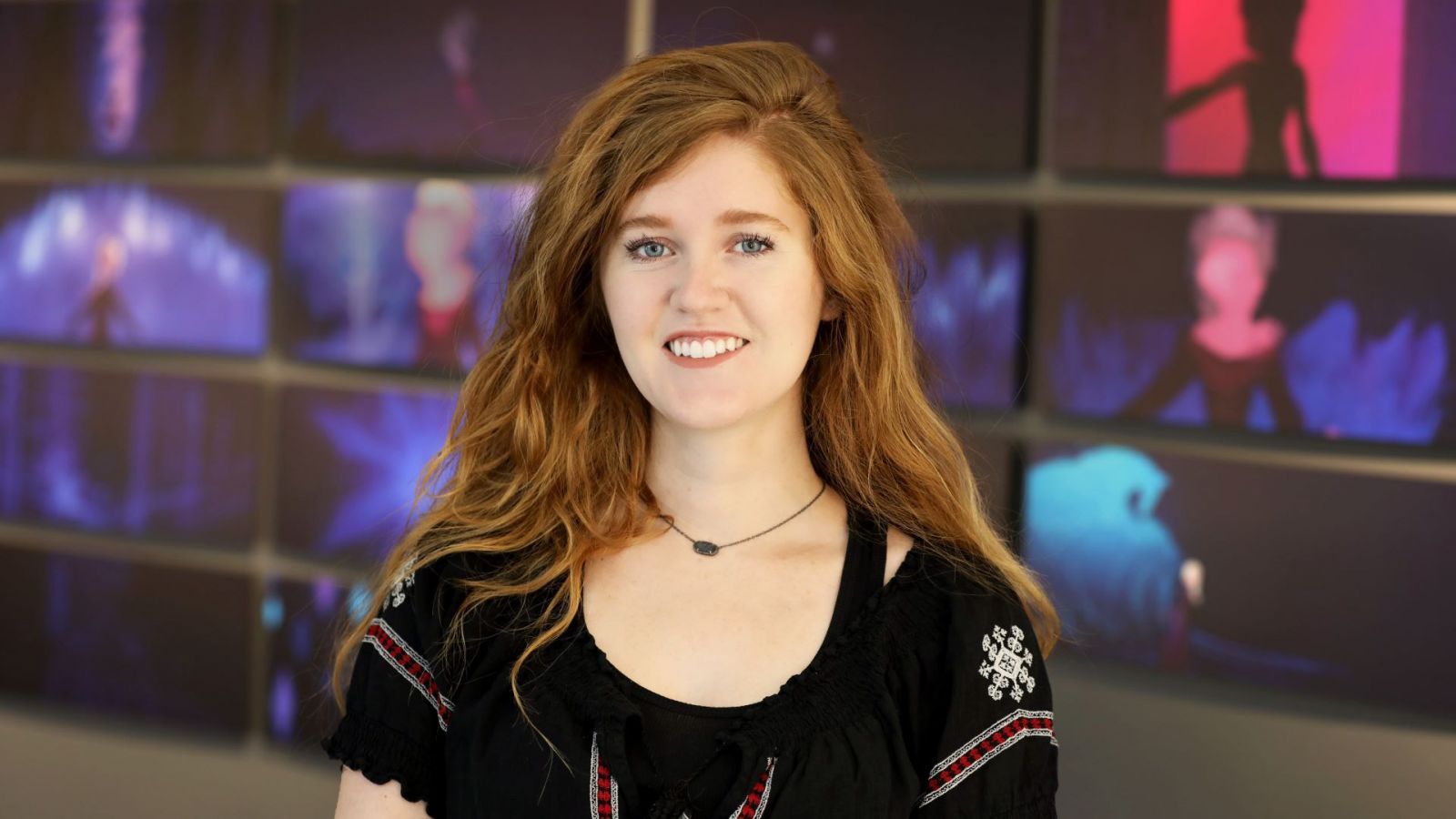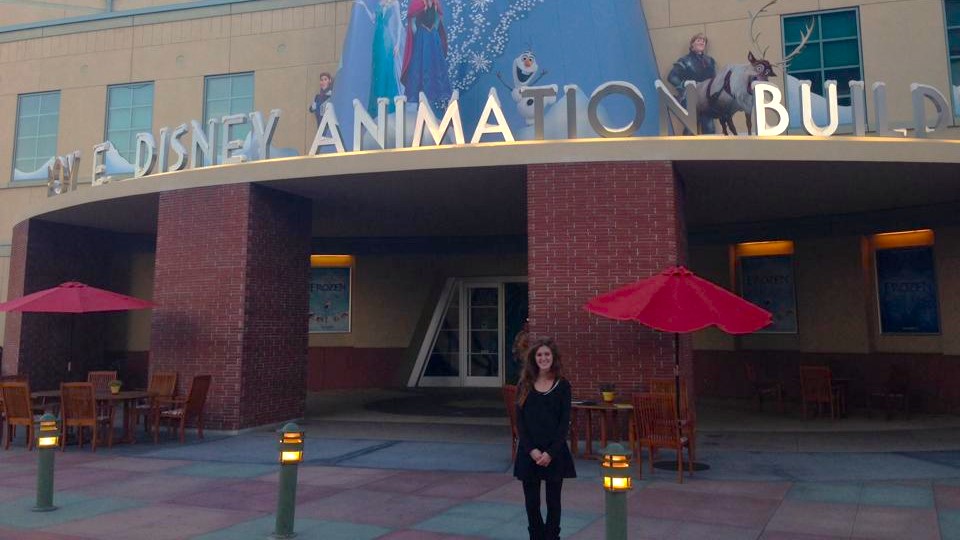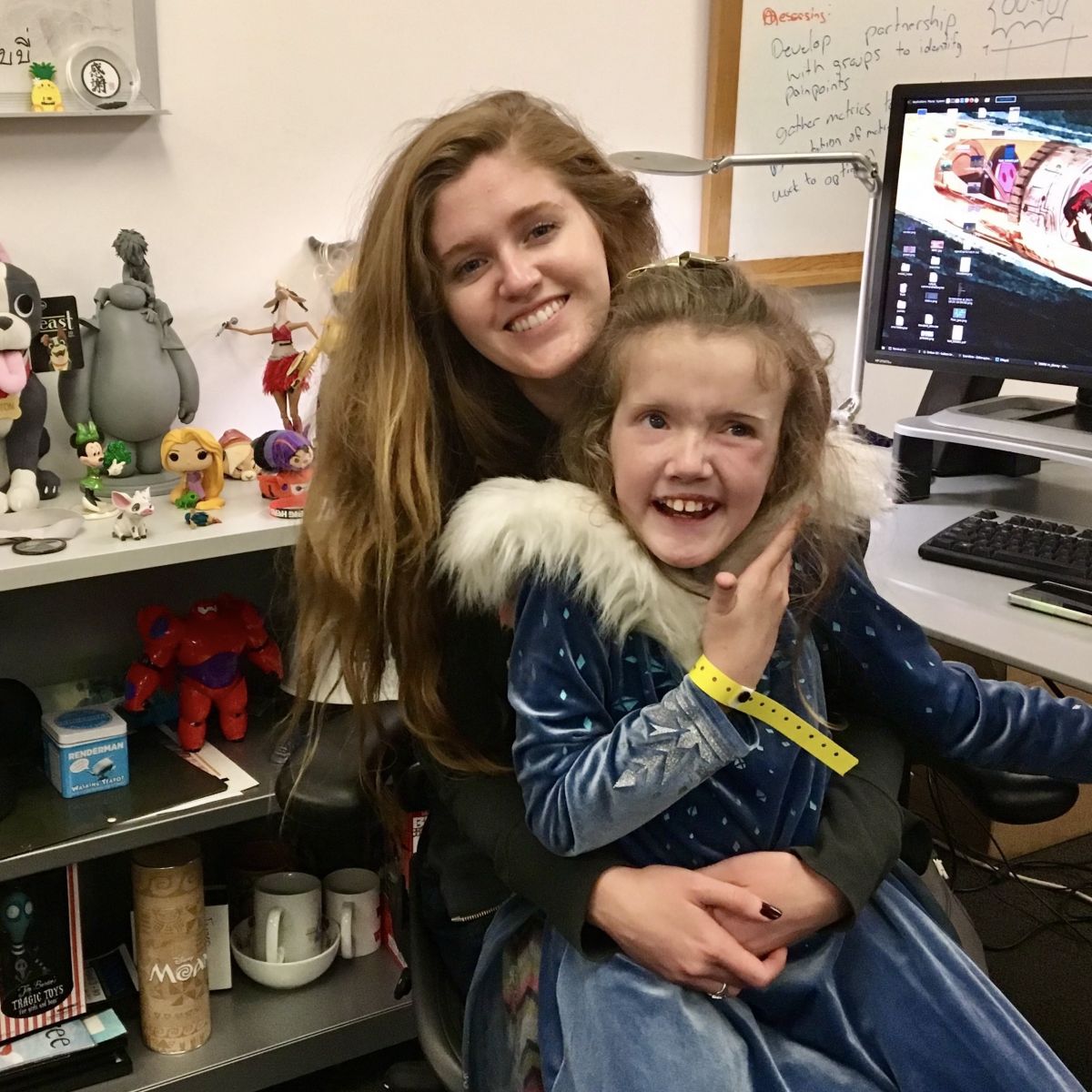
It was computer graphics or nothing at all for Kaileen Kraemer, who grew up transfixed by animated films and cinematic video games.
When she first found Purdue’s Computer Graphics Technology (CGT) program, Kraemer’s high school had no computer science courses; the work of software engineers and technical directors was a mystery. A Twin Cities native, Kraemer said enrolling in Purdue’s CGT program was simply a “huge hunch” and hoped it would become a gateway to careers in animation.
“Creating digital artwork was my hobby growing up and was constantly on my mind during high school. But I had no idea how to make that a job, and choosing to study CGT was all or nothing,” Kraemer said.
She didn’t fully realize that the rigor of the undergraduate CGT program had given her the ingredients for success until she started a career at Walt Disney Animation Studios.
Lessons in resilience and adaptability
As a student, Kraemer worked on projects where she had to execute on limited resources, similar to challenges professionals face in the industry. She discovered the overarching theme of her CGT experience was not simply learning skills in computer graphics but taking the initiative to research and fill in her own skill gaps.
“I became incredibly resourceful and adaptable through the CGT program, and I think that is a necessary skill as a technical director in an industry where both the technology and the business model is ever-changing.”

Nicoletta Adamo, a CGT professor and the current interim department head, emphasized to her students the importance of reading technical papers. Kraemer used this opportunity to come to a better understanding of a realistic lighting technique called “global illumination,” which became invaluable for her work on “Big Hero 6.”
Kraemer also participated in groups and service-learning opportunities during her time at Purdue that have had a tangible impact on her career path. Ray Hassan, a CGT professor, referred her to a student volunteer program for ACM SIGGRAPH, a global nonprofit organization focused on the evolution of computer graphics and interactive techniques. Her SIGGRAPH activities led to Kraemer attending a conference where she met her future boss.
“By far the biggest shoutout goes to Ray for all of the time, energy, and thoughtfulness he put into teaching us both during class, and for all of the hours outside of class in SIGGRAPH. The impact he has had is truly immeasurable.”
Kraemer also spent a summer teaching programming classes to high school students at iD Tech, which prepared her to teach new tools to artists at Walt Disney Animation Studios as a technical director.

Technical direction, for beginners
Kraemer’s job requires a high level of technical skills along with deep focus—something she loves—but it’s also balanced with interpersonal and customer service skills. She says it’s challenging to explain what she does to people outside the industry.
“People who are unfamiliar with computer graphics pipelines often do not realize how flexible job descriptions can be. They often want roles to be well-defined and to stay the same over time. I could come out and say, ‘I write tools for CG artists in Python and C++,’ but that is not a fully accurate picture of all of the value I am able to provide as a TD.”
Technical directors (or TDs) play key roles in supporting animators, artists, producers and sometimes directors through software development, testing and training on new tools. They step in to troubleshoot problems and keep production moving forward when new tools and processes need to be created.
Kraemer compared her work to a doctor, diagnosing and treating problems the team is facing. In one instance, she troubleshot an issue with a lighting artist during production for “Big Hero 6.” It was her first time working on a technical issue at the studio, and there was no quick fix. She was determined to root out the issue and, in the process, developed a positive working relationship with the artist that lasted well beyond the project.
“In my role as a technical director, I got the chance to meet and work with almost everyone on each production in some way,” she said. “TDs are ultimate connectors.”
Enter imposter syndrome
Kraemer’s own story was not without antagonists and plot twists. She was initially rejected by Disney one week before the first “Frozen” movie hit theaters. The hiring manager was gracious, she said, and complimented her attitude, but she didn’t make the cut.
After some persistence, Kraemer eventually landed a spot in a highly competitive space where team members were contending for a limited number of positions on each Disney film. Three of the four consequent hires also came from Ivy League schools with graduate degrees.
“I was like, ‘why did they hire me?’” she said. “I had a huge bout of imposter syndrome. But I realized a few months in that CGT geared me up for a more hands-on, I-can-do-it type of attitude.”
Her Ivy League peers brought in experience with complex projects and research, but Kraemer used her hands-on experience from Purdue’s animation courses to quickly “swim around” in the programs much faster than the others.
“They might have been able to more quickly come up with a sophisticated algorithm, but I had developed my own strengths, too.”
Becoming a lifelong learner was the most valuable thing she learned at Purdue, because it helped her build confidence that outshined the imposter syndrome. Her peers may have entered with special skills and advantages, but Kraemer knew she could teach herself almost anything she didn’t already know.
“Disney, the only century-old animated film studio, which also strives to innovate filmmaking itself with each release, is a perfect place for high achievers. It is a building filled exclusively with people who are trying to achieve a masterpiece in each film, and the intensity is truly infectious.”
Kraemer worked on a number of recognizable animated Disney films, her favorite being “Zootopia,” which was the first film she saw developed from beginning to end. Her name can be found in the credits on “Ralph Breaks the Internet” (Wreck-It Ralph 2), “Moana,” “Big Hero 6,” and “Encanto.”
Film production usually takes the form of hourly contract work, meaning people come and go often. Kraemer is no longer with Walt Disney Animation Studios, but she says she’s grateful for the opportunity to have spent so many consecutive years working on projects that have had “immeasurable global impact.”
Additional information
- Purdue alumni at Disney talk about careers, Oscars win (Purdue Exponent)
- PlayStation, ‘Last of Us’ and beyond: Q&A with master’s alumnus Xingyu Lei (Purdue Polytechnic newsroom)
